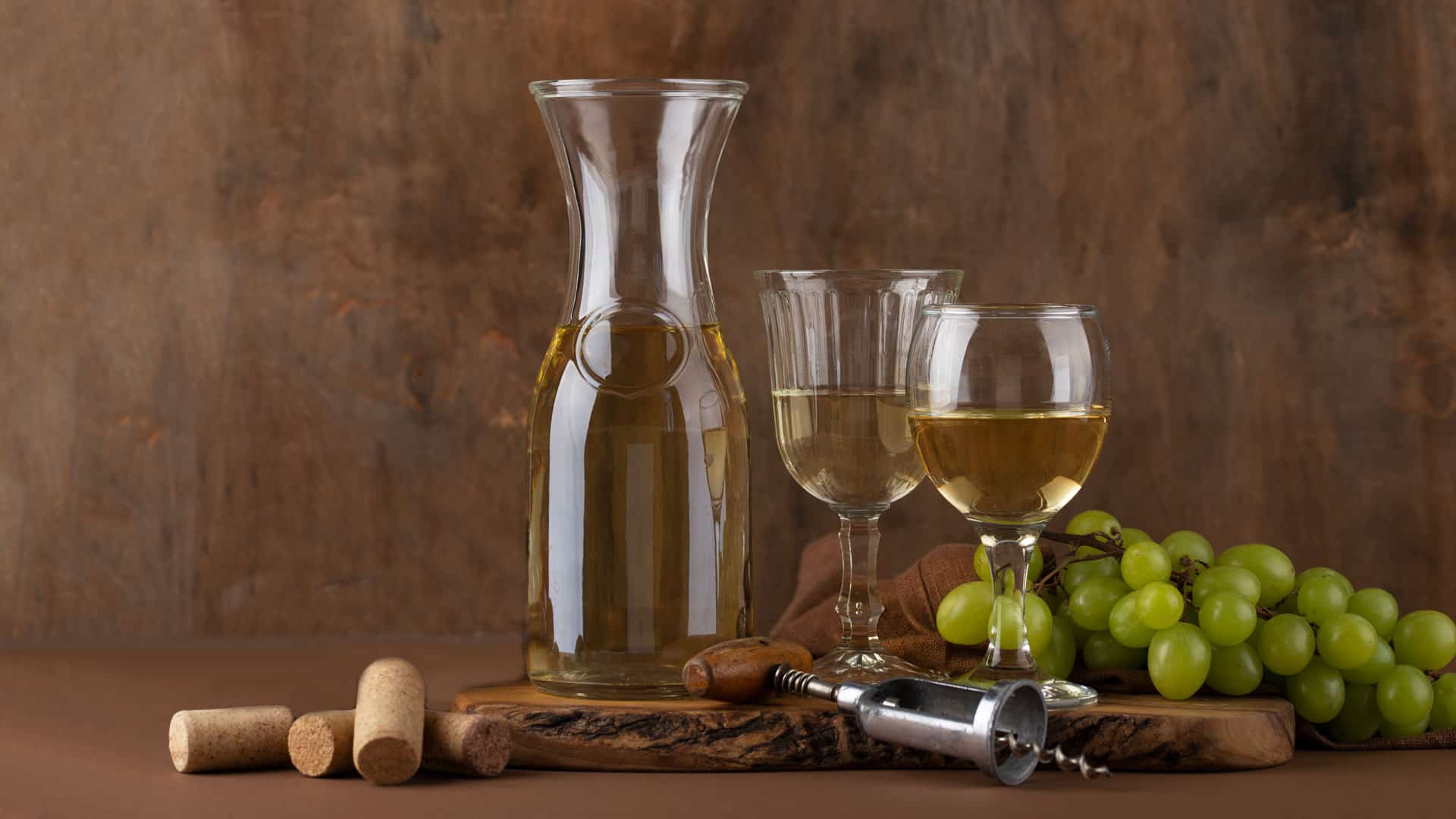Introduction: White wine
In our online store you will find numerous white wines of the highest quality. These come from various wine regions that are known for their diversity of grape varieties and wine styles. Our range also includes numerous other rosé wines, red wines and sparkling wines. Lovers of high-proof spirits will also find an exquisite selection of digestifs in the shop.
If you are looking for a gift, we recommend the various tasting boxes from our gift service, for example, or a gift voucher, which gives the recipient a free choice in our online shop.
The most important facts about white wine at a glance
- Changing consumer behavior is also leaving its mark on the global wine market. In 2022, for example, more white wines and rosé wines were consumed than red wines for the first time, at just over half. It is assumed that one reason for this is the unbroken sparkling wine boom in countries such as the United States, Germany and England since 2010. However, the fact that white and rosé wines generally have a lower alcohol content is also cited as a possible reason.
- White grape varieties originated as a mutation from red grape varieties. This mutation occurs because the white grapes lack one or two specific genes, which leads to the loss of the red color. However, white grape varieties actually have a green, yellow or even light red color. The existence of white wine was first documented in ancient Greece. None other than Hippocrates wrote of a white wine that had healing properties and used it in two variants(vinous and bitter) as a disinfectant, as a painkiller and also for cardiovascular diseases.
- The most important white grape varieties worldwide include Airén (252,000 ha), Chardonnay (199,000 ha), Sauvignon blanc (110,500 ha) and Trebbiano (109,000 ha). Airén is considered a mass grape that is used in the La Mancha region of Spain to produce cheap base wines for the sparkling wine industry as well as for distillation. Trebbiano also supplies rather undemanding base wines for distillation, while Chardonnay and Sauvignon blanc are vinified worldwide to produce absolute top wines.
- In Switzerland, the Chasselas grape (around 3672 hectares under cultivation [2019]) is the most important white grape variety. Other popular white wine grape varieties include Müller-Thurgauer/Riesling-Silvaner and Chardonnay.
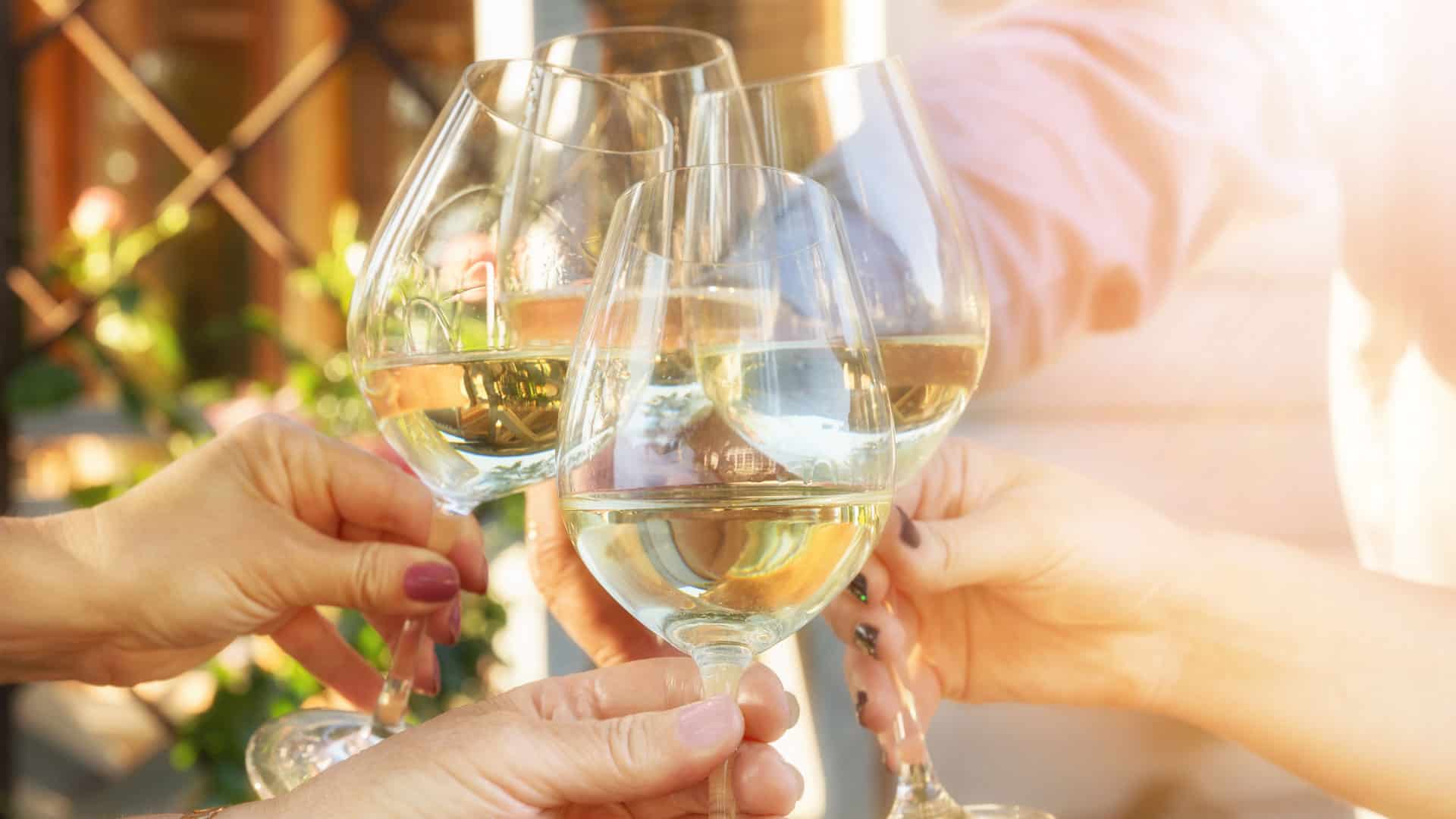
Origin, provenance and meaning of white wine
The first evidence of the cultivation of white wine was found in grape seeds. The origin is probably between Damascus and the Black Sea coast. For a long time, records and sources dated the cultivation of white wine in what is now Europe to around 1000 BC, but recently discoveries were made in what is now Iraq and Georgia which suggest that white wine was already being cultivated there around 5000 BC.
The fact that white wine was produced much later than red wine is probably also due to the fact that the production process for white wine is comparatively more demanding. In addition, white wine grape varieties appeared much later than red wine grape varieties.
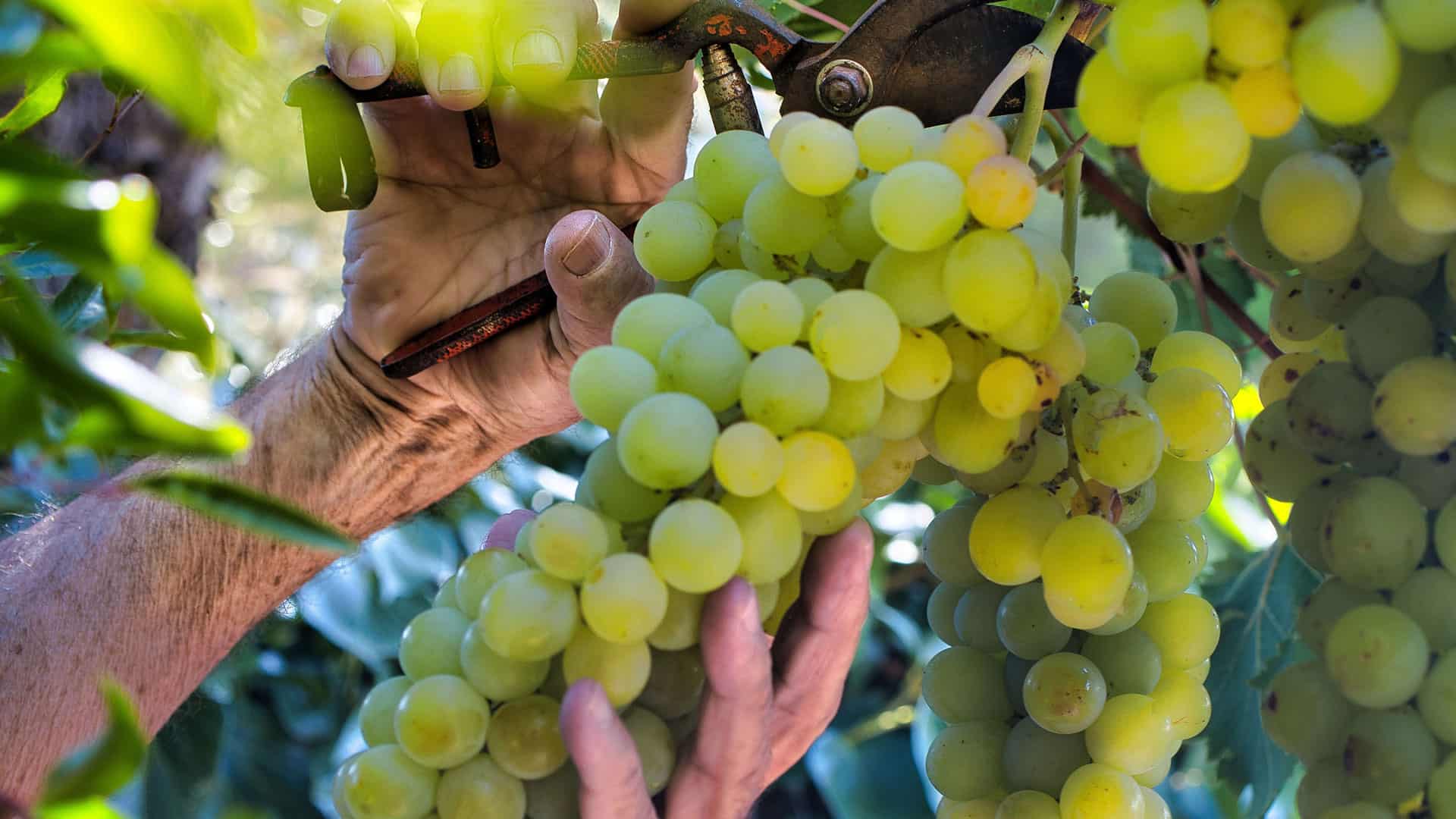
In addition to the Romans, the monasteries also played a leading role in the spread of wine in Europe from the Middle Ages onwards. The latter, favored by a change in climate from the 12th century onwards, subsequently succeeded in producing wine, including white wine, in considerable quantities. However, since at that time a distinction was only made between the colors white, red or black and between two quality levels(Hunnish or Frensch wine) and the grape varieties were also cultivated in so-called mixed sets, both the color and taste of the wine were rather a matter of luck or, with regard to monastic cultivation, a divine providence.
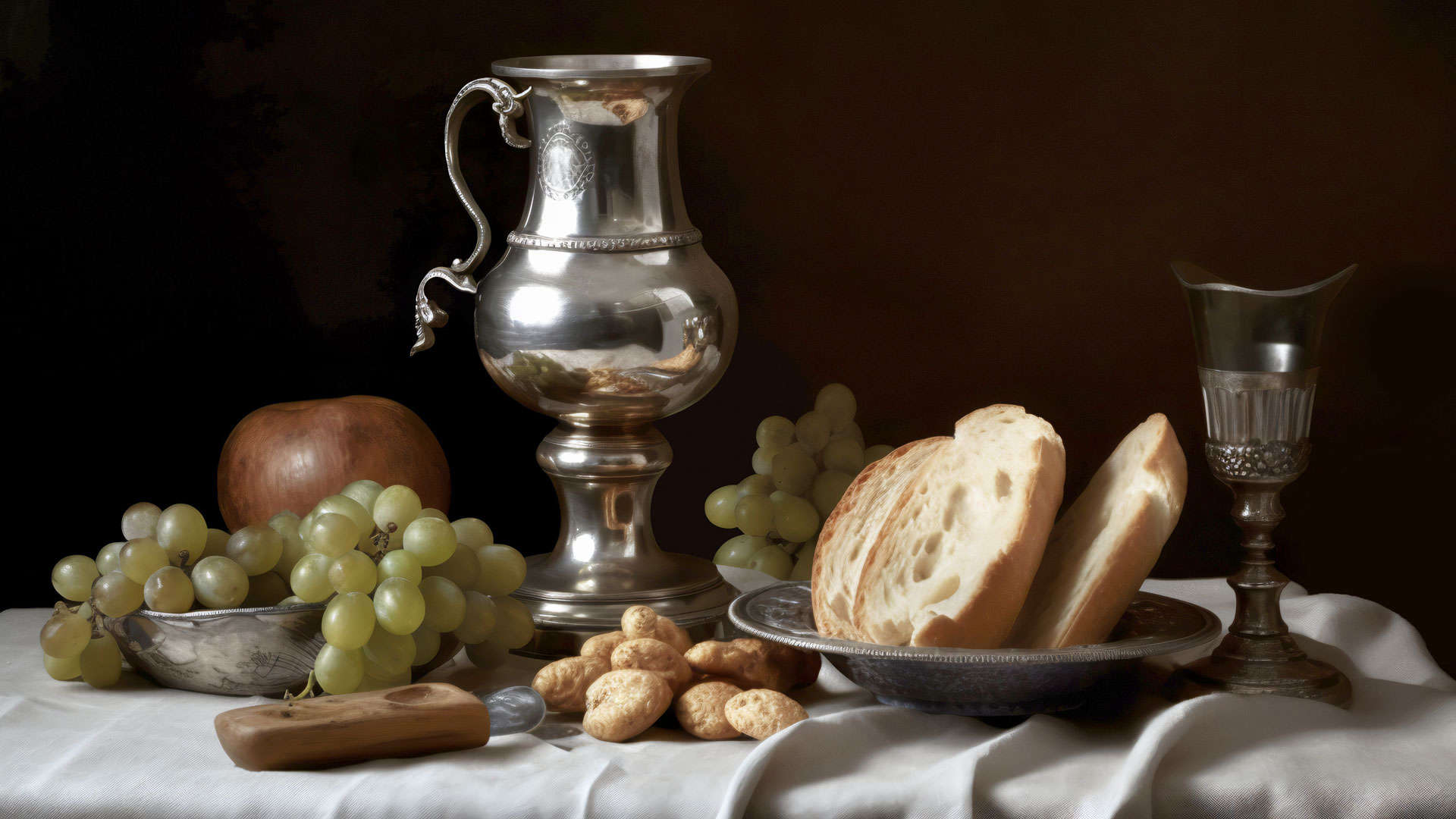
White wine received its first official high consecration in 1478, when Pope Sixtus IV officially approved it as a mass wine. Today, white wine, together with rosé wine, is consumed more worldwide than red wine. There are a large number of white grape varieties, including those that are of more regional importance and others that enjoy great popularity worldwide due to their high adaptability to the respective terroir, both among winegrowers and as wine among consumers in the form of white wines, white sweet wines or even as sparkling wines.
White wine production
White wine is made from white or light-colored grapes whose skin and pulp are often greenish, yellow or light red. The grapes are sorted and destemmed after the harvest, which means that the berries are separated from the stems.
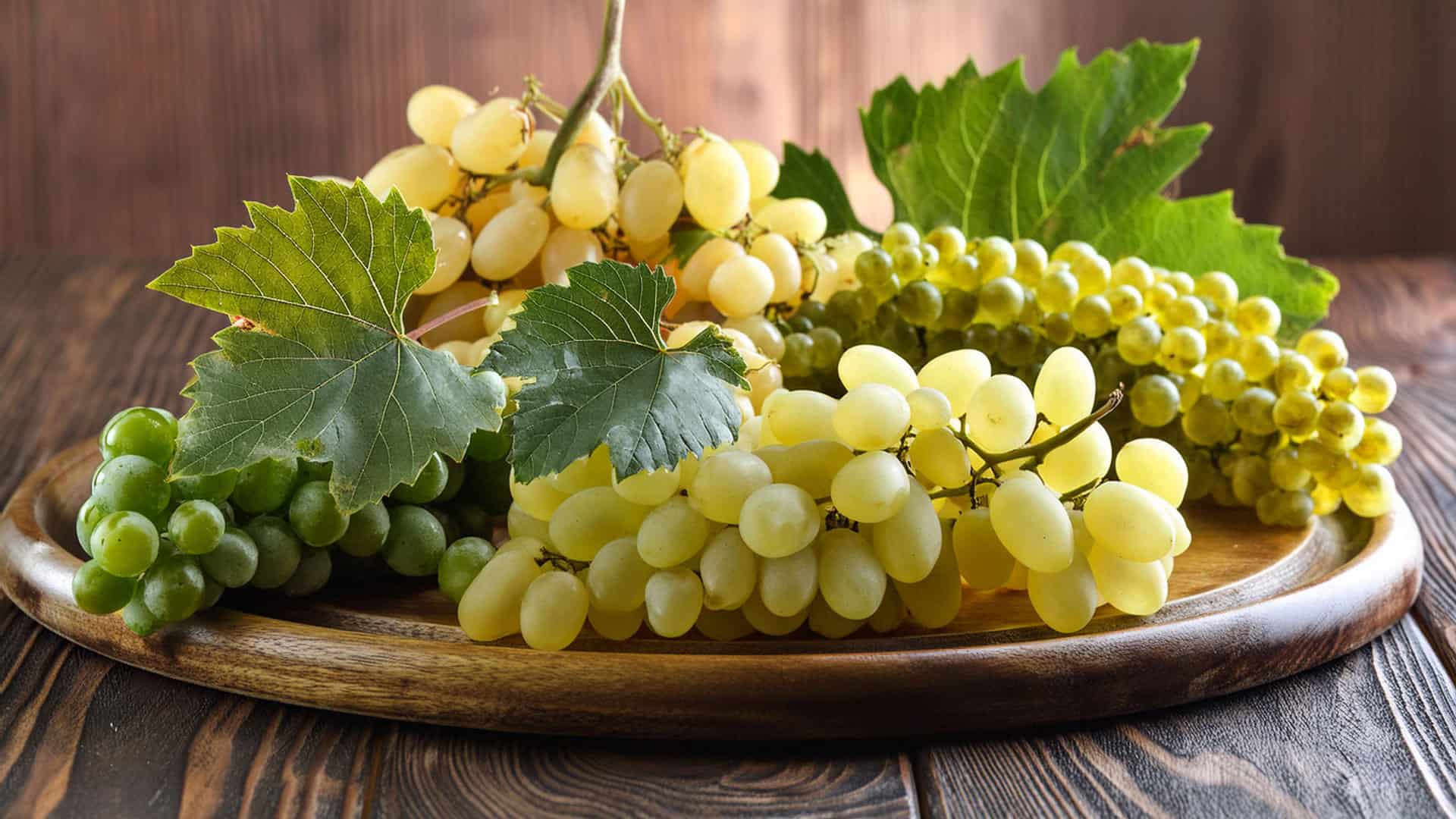
The grapes are then gently pressed to separate the juice from the skins. The grape juice obtained, also known as must, is then filled into tanks or barrels. This is where fermentation begins, with yeasts converting the sugar in the must into alcohol and carbon dioxide. During fermentation, the temperature is carefully controlled to preserve the aromas and freshness of the wine.
After fermentation, the young wine is often clarified to remove turbidity. The wine then matures for some time in tanks or wooden barrels, depending on the desired taste and style. Finally, the wine is filtered and bottled. Before being sold, the white wine is often stored for a while to harmonize and refine its taste.
White wine Grape varieties
The largest, most important and best-known wine-growing regions in the so-called old world are Spain with 880,000 hectares of vineyards, followed by France with just over 700,000 hectares and Italy with 694,000 hectares (as of 2018).
Spanish white wines: Airén, Verdejo, Albariño and more
The proportion of white wine production in the 17 designated wine-growing regions of Spain is 42%. These regions are characterized by an impressive diversity of grape varieties and wine styles. A large proportion of this is accounted for by the so-called mass grape Airéen, which is grown in the La Mancha Valley for the production of simple base wines for the sparkling wine industry and distillation. One of the best-known Spanish white wine regions for high-quality wines is Rioja Rueda.
French white wines: Sauvignon Blanc, Chardonnay, Riesling and more
The proportion of white wine production in the 14 designated wine-growing regions of France is just 27%. These regions offer an impressive variety of grape varieties and wine styles. In terms of single-varietal wines, France is world-famous for its Loire wines made from the Sauvignon Blanc grape, Chardonnay from Burgundy, Riesling and Gewürztraminer from Alsace, as well as Champagne and sweet wines made from the Sémillon grape from the Bordelais.
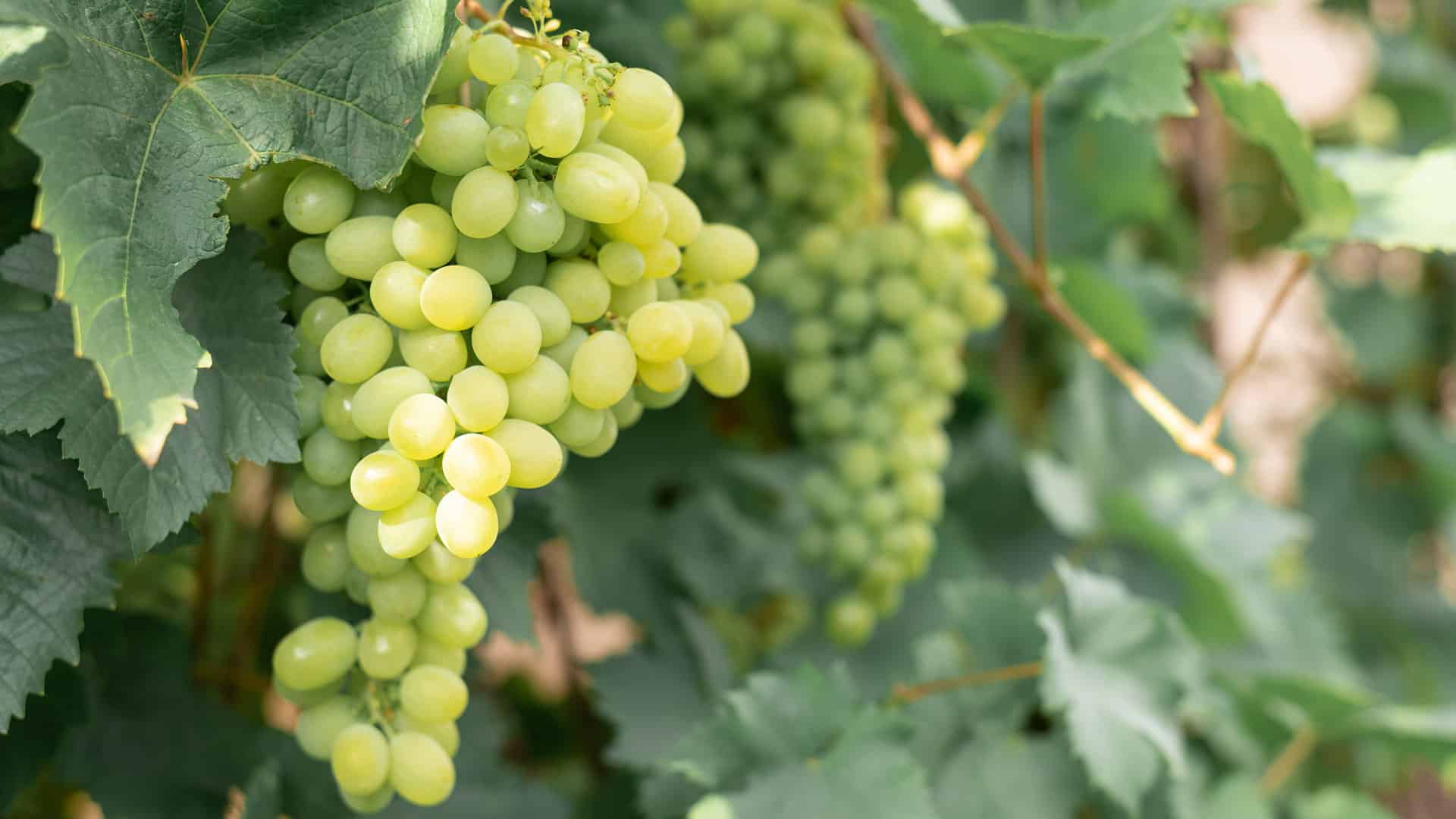
Italian white wines: Trebbiano, Chardonnay, Pinot grigio and more
The proportion of white wine production in Italy’s 20 designated wine-growing regions is 43%. Italy is characterized by an impressive variety of wine regions, ranging from the Alps to Sicily. The Trebbiano grape variety is particularly noteworthy here, but Chardonnay, Pinot grigio and Muscat are also widespread. Viticulture and wine production in Italy is characterized by the regional conditions; the country offers the entire range of terroirs from cool to temperate to warm wine-growing regions.
Swiss white wines: Chasselas, Petite Arvine, Pinot Gris and more
The proportion of white wine production in the 6 designated wine-growing regions of Switzerland is 44%. These regions offer an impressive diversity of grape varieties and wine styles. The largest wine-growing region is the canton of Valais with around 5,000 hectares of vineyards (Switzerland: 14,835 hectares). The most important white grape variety in Switzerland is the Chasselas grape, followed by Müller Thurgau, Chardonnay, Silvaner and Riesling. Numerous indigenous white grape varieties are also widespread in Valais, such as Heida, Petite Arvine and Humagne blanc. Excellent wines from these grape varieties can be tasted and purchased at the Adrian & Diego Mathier Nouveau Salquenen AG winery – a Swiss winery with a long tradition.
White wine and food
It depends on which white wine you want to drink. A good white wine goes well with fish, seafood, white meat dishes such as poultry and also with lighter vegetable dishes. White wine goes well with various dishes, such as paella, melon salad, asparagus and more.
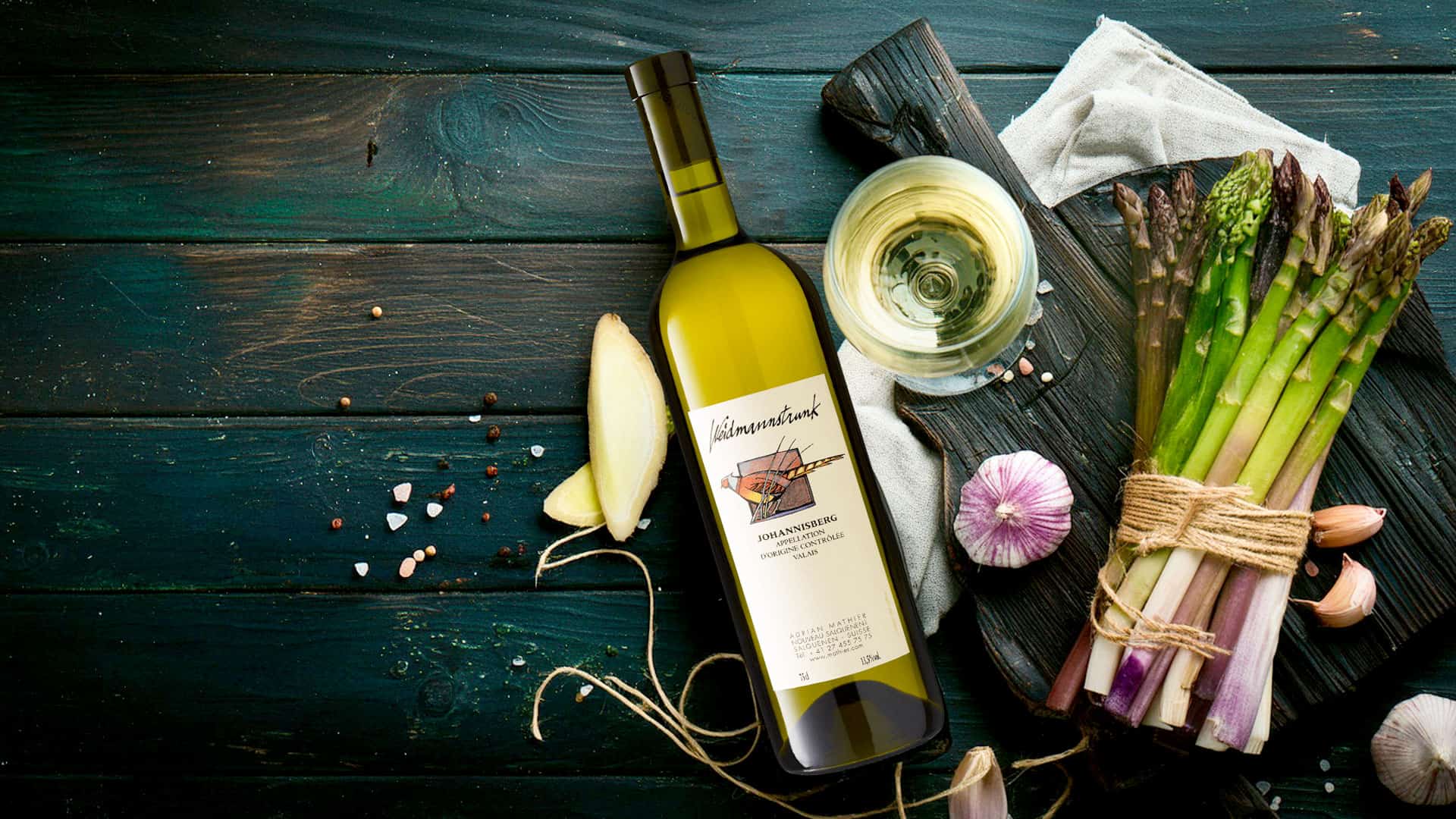
The subject of wine pairing, i.e. which wine goes with which food, is an exciting, fascinating and wide-ranging topic. In the Mathier wine blog you will find various articles on a wide range of topics:
- Winepairing – which wine goes with which food? (-> link with https://www.mathier.com/de/winepairing)
- Which wine to pair with cheese? (-> link with https://www.mathier.com/de/wein-kaese)
- A Swiss duo with cult status: wine & cheese fondue (-> link to https://www.mathier.com/de/weinblog/kaesefondue)
- A Valais duo with cult status: wine & raclette (-> link to https://www.mathier.com/de/raclette-wein)
- The sweet agony of choice – which wine for an aperitif? (-> link with https://www.mathier.com/de/aperitif)
Storage and service of white wine
The correct storage of white wine
Like any other wine, white wine should be stored at a constantly cool temperature in the dark and at a constant humidity level (50 to 75%). This is because light and heat are the wine’s greatest enemies. Once the wine has been opened, it should always be stored in an airtight container in a dark and cool place. An opened bottle of white wine should also be drunk after five days at the latest.
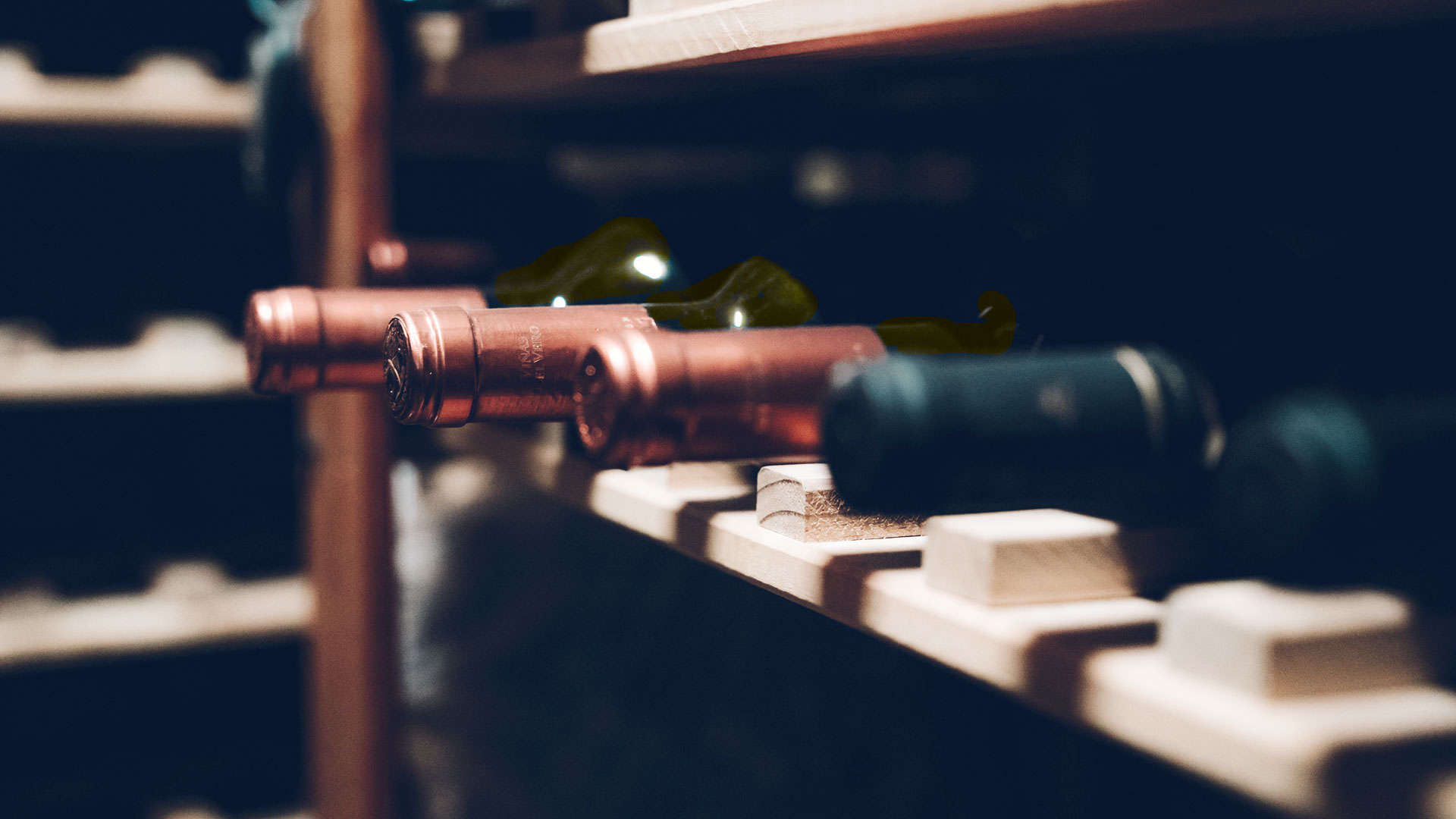
The right serving temperature for white wine
So that you can enjoy white wine to the full, it should always be served slightly cooler than the drinking temperature. This is because the ambient temperature and the wine glass cause the wine to gain around two or three degrees in temperature as soon as it is poured. In summer, you can therefore store and serve your wine up to four degrees cooler than it will be drunk.
Which glass for which white wine?
In contrast to the red wine glass, the glass for white wines is always slightly smaller and also less wide in the goblet. It is also less wide in the goblet.
If you want to enjoy a rather light and aromatic white wine, you should choose a so-called Riesling glass. This is slightly smaller and also less bulbous than the Chardonnay glass, for example. With its smaller diameter and smaller volume, this glass guarantees a longer-lasting taste sensation, as the aroma concentration is higher and is directed straight to the nose and tongue due to the narrow shape of the glass.
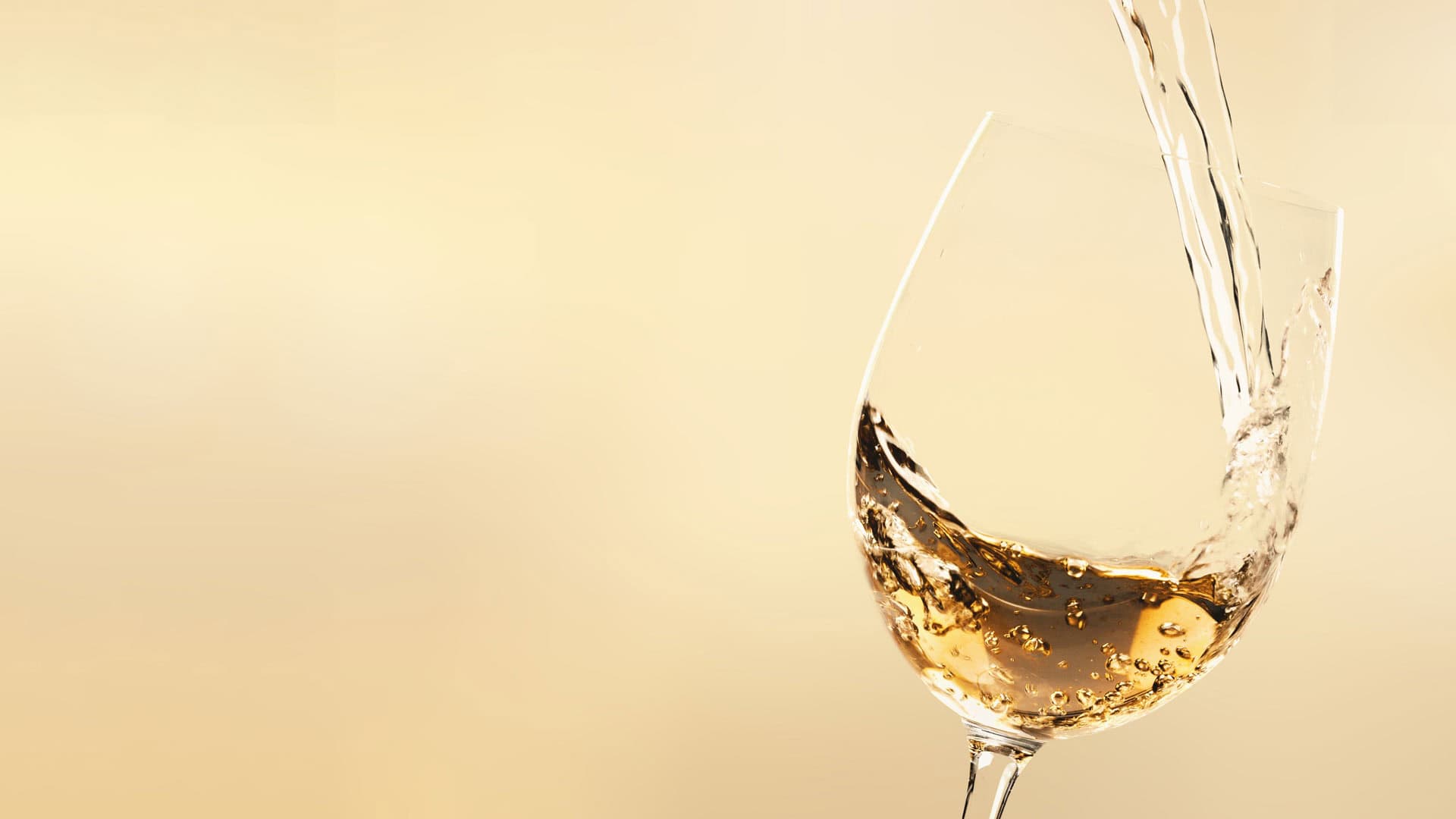
In the case of a stronger and richer white wine, you should use the aforementioned Chardonnay glass instead. It is bulbous and has a rather short chimney in comparison. Thanks to the bulbous bowl, the wine comes into greater contact with oxygen. This ensures that the fruit aromas in the wine can come into their own particularly well, especially as any woody notes are also better balanced in this glass. Full-bodied wines in a Chardonnay glass therefore appear smooth and round.
Quality wines: How do you recognize a good white wine?
There are two approaches to judging whether a white wine is of good quality. The first is to look at the entire area of wine production. There are various criteria to consider here, which are divided into two groups. On the one hand, there are all the factors that have to do with the vineyard. These include the selected grape variety itself as well as the so-called terroir, i.e. the soil conditions, the climate, the location and the method of viticulture used. On the other hand, the second group examines the aspects of winemaking, ageing and subsequent storage in the cellar.
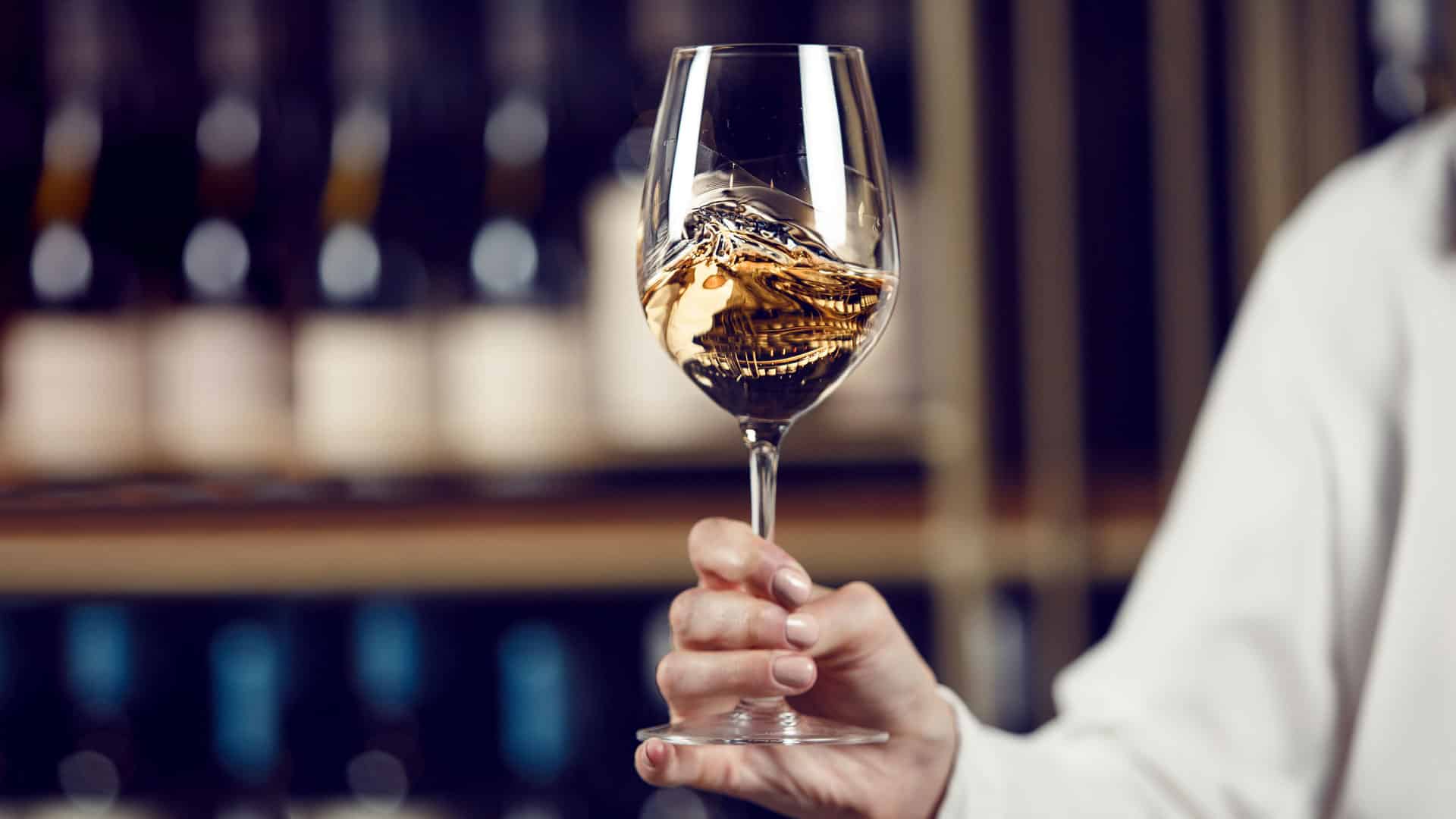
The second approach to assessing the quality of a wine is once it is in the glass. Here, a white wine is judged according to the four criteria of color, aroma, structure and taste. The color of the white wine should always be clear and free of turbidity. If the wine presents itself with a wide variety of aromas, this is a further indication of good quality. The same applies if the structure of the wine, i.e. the balance between acidity, fruit and alcohol, is balanced and harmonious. If the wine then delivers a good finish, i.e. its aroma lingers for at least 6 to 12 seconds, it can be considered a good quality white wine.
What are the primary aromas of white wines?
The aromas of a wine are among the most important criteria when it comes to its quality. The range of aromas is very wide. In order not to get lost in the world of aromas, but to reach the right result quickly when tasting, it is advisable to know and classify them better in advance.
In the case of white wines, the primary aromas, i.e. the aromas that come from the grape, are best classified according to the growing region. In other words, does the wine come from a cool, temperate or warm growing region?
- Cool wine-growing region with rather unripe or barely ripe grapes, which tend to bring aromas of green fruits into the glass: Herb, asparagus, green bell pepper, gooseberry, green apple, flowers.
- Moderate wine-growing region with riper grapes that tend to bring yellow fruit aromas to the glass: Lemon, lime, grapefruit, peach, apricot, nectarine, yellow apple, quince, melon.
- Warm wine-growing region with ripe grapes that tend to bring aromas of exotic fruits into the glass: Passion fruit, pineapple, banana, mango, lychee
- Warm wine-growing region with fully ripe or overripe grapes, which tend to bring aromas of dried fruit into the glass: Jam, syrup, dried fruit, dried fruit, raisins, honey.
How can I classify the white grape varieties?
To make it easier to find your way around the world of white wines, it is advisable to categorize the grape varieties according to a scheme. After all, the range is diverse, each variety has its very own characteristics and special features, and ageing in steel tanks or oak barrels only makes the distinction more complex.
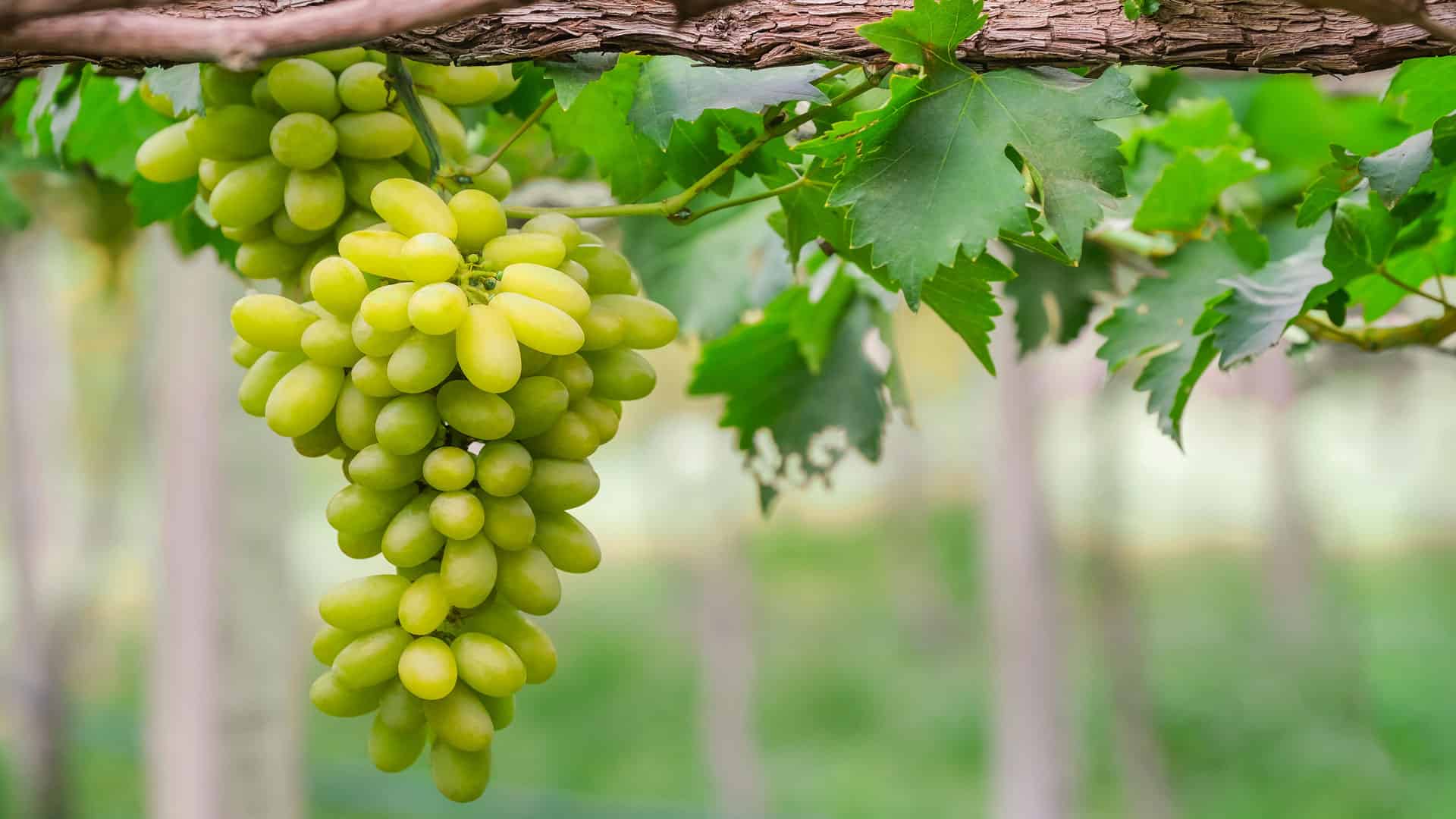
The grape varieties of white wines can basically be divided into two groups.
- Category 1: Sauvignon Blanc, Riesling, Gewürztraminer, Viognier, Muscat, Verdejo, Albarino, Torrontés
- Category 2: Chardonnay, Pinot grigio, Pinot blanc (Pinot blanc), Chenin blanc, Sémillon, Furmint, Cortese, Garganega, Fiano, Verdicchio
Category 1 includes the so-called aromatic varieties. These include all those grapes that are known for having one or more typical aromas. For example, the Viognier variety is known for smelling of apricots, Gewürztraminer of lychee, Sauvignon Blanc of grapefruit and asparagus, Riesling of stone fruits, Torrontés of rose petals, etc.
Category 2, on the other hand, includes the so-called neutral varieties. These have little variety of flavors and predominantly have aromas of apple and/or citrus fruits.
With category 1 grape varieties, the winemaker’s aim is to bring the respective lead aroma into the glass as intensely and as clearly and cleanly as possible. With category 2 grape varieties, the winemaker has much more leeway. In this case, he has two options: to leave the variety more or less as it is. On the one hand, this is inexpensive, and on the other hand, it meets the broad taste of consumers. On the other hand, these varieties can be given additional complexity and intensity by ageing the wine in oak barrels, adding lees, subjecting the wine to lactic acid degradation, concentrating the fruit of the grape varieties through late harvesting, noble rot, bottle ageing (tertiary aromas), etc.

Interesting facts about white wine
Here is an overview of important facts about white wine.
What white wines are there?
Here are a few of the best-known white wine varieties: Airén, Auxerrois, Bacchus, Chardonnay, Sauvignon Blanc, Pinot Blanc and Pinot Gris, Grüner Veltliner, Gewürztraminer, Palomino, Kerner, Müller-Thurgau, Viognier and Chenin Blanc. White wine is mostly produced dry, but there are also many sweet varieties and dessert wines in light colors.
What is the most popular Swiss white wine?
Chasselas is the most frequently cultivated white wine in Switzerland. The best-known white grape varieties include Chasselas, Sylvaner, Pinot Gris, Riesling-Silvaner and Completer. Chasselas in particular is closely associated with the Lavaux wine region on Lake Geneva and is cultivated as Fendant in Valais.
Which white wine is good to drink?
There is a whole variety of white wines that are good to drink. For example, crisp, fresh and tangy white wines such as Riesling, Pinot Grigio or Sauvignon Blanc go particularly well with seafood. But velvety-soft red wines with berry aromas, such as a light Pinot Noir or a Spanish Rioja, also harmonize perfectly with delicate seafood.
Which Swiss wines are available?
- Chardonnay.
- Sauvignon Blanc.
- Petite Arvine.
- Heida.
- Amigne.
- Viognier.
- Chasselas (Fendant).
- Marsanne blanche.
What types of white wine are there?
These include Riesling, Chardonnay, Elbling, Blaufränkisch, Colombard, Bourboulenc, Furmint, Silvaner and Xinomavro. Other leading white grape varieties include Chenin blanc, Sauvignon blanc, Chasselas and Muscat blanc.
What is the difference between white and red wine?
The biggest difference in the production of red and white wine is that the skins and seeds of the grapes remain in contact with the must in red wine, whereas they are removed in white wine.

